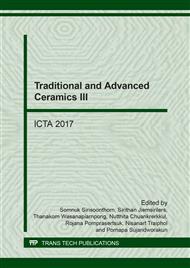p.1
p.7
p.13
p.19
p.28
p.34
p.40
p.44
Micromorphology of Porosity Related to Electrical Resistance of Dental Luting Cements
Abstract:
The aim was to investigate the relation between micromorphology of porosity and electrical resistance of dental luting cements. Five dental luting cements were evaluated: zinc phosphate, glass ionomer, and three types of resin luting cements. Porosity of the specimen was analyzed by micro-CT and electrical resistance of cement was measured at voltage of 125 V up to 30 days and solubility of each specimen was calculated. It showed that the resin luting cements provided the highest electrical resistance regardless of amount of porosity. Zinc phosphate and glass ionomer had high porosity and the lowest resistance (14 and 3 kΩ, respectively). It was found that the electrical resistance of luting cement was not directly affected by the amount of porosity, but it seems to be related to pore connection. There is no correlation between electrical resistance and percentage of porosity but the morphology of porosity may have an influence on the electrical property of luting cement. Models of pore connection were proposed to explain the electrical resistance of luting cement.
Info:
Periodical:
Pages:
13-18
Citation:
Online since:
April 2018
Price:
Сopyright:
© 2018 Trans Tech Publications Ltd. All Rights Reserved
Share:
Citation:


